No products in the cart.

1. Introduction:
Farming has long been rooted in tradition, but as global challenges like climate change, resource scarcity, and rising food demand push the limits of conventional agriculture, a digital transformation is unfolding. Enter AI in modern farming, a technology once reserved for laboratories and finance sectors, now quietly revolutionizing how our food is grown.
Across the globe, farmers are adopting AI-powered solutions to tackle persistent issues like crop disease, inefficient irrigation, and unpredictable weather. No longer limited to large-scale operations, even smallholder farmers are starting to leverage affordable agri-tech tools that make smarter, data-driven decisions possible. From smart sensors that monitor soil health to AI-driven drones surveying vast fields, this shift marks a major turning point.
But why is this happening now? And how exactly is AI reshaping agriculture on the ground?
In this deep dive, we’ll explore the evolving role of artificial intelligence in agriculture, the tools enabling precision, the measurable benefits it brings, and the ethical challenges that must be addressed. Whether you’re a farmer curious about tech or an agri-business investor, understanding how AI is transforming farming is essential for staying ahead.
2. The State of AI in Modern Farming: Challenges & Constraints
Before AI entered the scene, farming faced a long list of persistent challenges. From unpredictable weather patterns to rising input costs and dwindling labor forces, traditional agriculture has struggled to keep pace with the growing demands of a changing world. With global food security at risk and populations on the rise, the pressure on farmers to produce more with less has never been higher.
Water scarcity and soil degradation have further complicated things. Conventional farming methods often rely on over-irrigation and heavy chemical use, leading to environmental harm and long-term productivity loss. Meanwhile, pests and diseases are becoming more resistant to standard treatments, creating new threats to crop yields.
Additionally, the lack of access to real-time farm data leaves many growers relying on guesswork instead of science-backed strategies. In this environment, making the right decisions at the right time becomes increasingly difficult, especially for small and mid-sized farms that lack access to advanced tools.
These issues aren’t just technical; they’re deeply economic and environmental. Many farmers are caught in a cycle of low margins and high risk, with little room for innovation.
That’s exactly where AI in agriculture steps in, not just as a convenience, but as a necessary evolution. As we move forward, AI technologies offer the precision, efficiency, and insights that modern farming desperately needs.
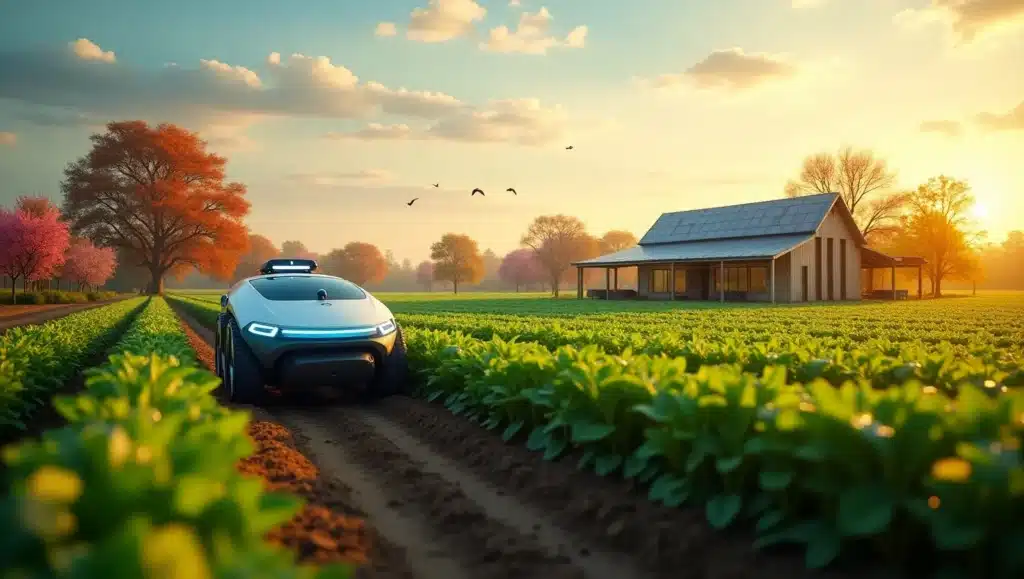
3. How AI is Integrated into Agriculture
Artificial Intelligence isn’t just a buzzword in agriculture anymore, it’s being embedded into the very core of how farms operate. The integration of AI in agriculture involves a combination of technologies like machine learning, computer vision, and predictive analytics to enhance decision-making and optimize outcomes.
At the ground level, AI-powered sensors collect critical data on soil moisture, nutrient levels, and crop health in real-time. This data feeds into intelligent systems that recommend precise actions, whether it’s the best time to irrigate or when to apply fertilizer. These tools are central to precision farming, which focuses on maximizing output while minimizing input costs.
Drones and autonomous tractors equipped with computer vision can scan large fields for pests, weeds, or disease outbreaks. With AI algorithms processing this data, farmers receive actionable insights faster than ever. Even satellite imagery, once limited to weather forecasts, is now used by AI platforms to detect crop stress or assess field variability with astonishing accuracy.
Moreover, AI is increasingly being integrated into farm management software, streamlining everything from logistics to inventory. Farmers no longer have to rely on intuition; they can use data-driven insights to plan better and act quicker.
This deep tech adoption not only boosts productivity but also supports sustainable agriculture, reducing water use and chemical inputs.
4. Real-Life Applications of AI in Agri-Tech
AI in agri-tech isn’t just a concept, it’s driving real change on farms today. Across the U.S. and globally, farmers are deploying AI to solve complex challenges and improve efficiency at every stage of the agricultural cycle.
One key application is crop disease detection. AI systems using computer vision can scan leaves and identify early signs of diseases before they spread. This helps prevent large-scale crop loss and reduces the need for widespread pesticide use. Similarly, AI for pest control uses historical and real-time data to predict infestations, allowing farmers to take timely action.
Another major breakthrough is in yield prediction. By analyzing soil conditions, weather data, and plant growth patterns, AI tools can estimate expected outputs with impressive accuracy. This helps farmers plan better and manage risks more effectively.
AI in irrigation systems is another growing area. Smart irrigation platforms analyze weather forecasts, soil moisture levels, and plant water requirements to ensure crops get the right amount of water, no more, no less. This is crucial in areas facing water scarcity.
Meanwhile, AI-powered drones are monitoring field health from above, identifying issues like nutrient deficiencies or weed outbreaks in specific zones. These drones support precision agriculture by enabling targeted treatment rather than a one-size-fits-all approach.
From the field to the cloud, AI is making farming smarter, faster, and more sustainable.
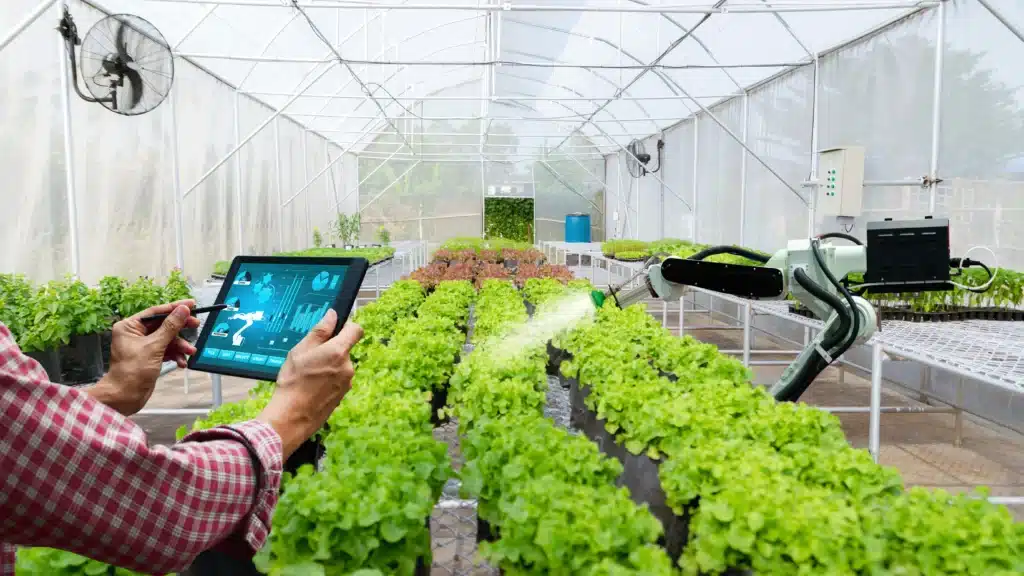
5. Benefits of Using AI on Farms
The adoption of AI in farming is unlocking a host of tangible benefits for growers of all sizes. At the top of the list is increased crop yield. By using AI-driven insights to make smarter planting, fertilization, and irrigation decisions, farmers can significantly improve their productivity per acre.
Next comes cost reduction. AI helps optimize the use of resources like water, fertilizer, and pesticides by targeting them only where and when they’re needed. This reduces waste and lowers operational expenses, especially in large-scale farming operations where margins are often tight.
Another crucial advantage is risk management. With real-time analytics and predictive models, AI can help farmers anticipate everything from extreme weather events to pest outbreaks. This foresight enables better preparation and quicker responses, minimizing potential losses.
AI also enhances labor efficiency. Tasks that once required large teams, such as crop monitoring or data collection, can now be handled by autonomous machines or analyzed instantly by software. This is particularly valuable in areas struggling with agricultural labor shortages.
Finally, AI is playing a key role in sustainable agriculture. By supporting precise, efficient, and environmentally conscious farming practices, it helps farmers meet growing consumer demands for sustainability while protecting natural resources for future generations.
The benefits of AI aren’t theoretical, they’re already being seen in fields across the globe.
6. Ethical Considerations & Potential Risks
While the benefits of AI in farming are undeniable, there are also important ethical and practical challenges to consider. One significant concern is data privacy. With AI systems collecting vast amounts of data on everything from soil health to weather patterns, ensuring that this information is kept secure and not misused is essential. Farmers must trust that their data won’t be exploited by corporations or third parties.
Another ethical dilemma revolves around AI’s impact on labor. As more tasks become automated, there’s the potential for job displacement in rural communities where agriculture is a major source of employment. While AI can improve efficiency, it could also exacerbate economic inequality if workers are left without alternative opportunities.
Furthermore, the adoption of AI technologies might be inaccessible for smallholder farmers due to the high initial costs of implementation. This could widen the gap between large-scale farms, which can afford cutting-edge tools, and smaller operations that are left behind.
AI also raises concerns about bias in algorithms. If the data used to train AI systems is flawed or incomplete, the algorithms may make decisions that are not universally applicable, potentially leading to inaccurate recommendations and inequitable outcomes.
Finally, there’s the environmental risk of over-reliance on AI tools. While these technologies are designed to enhance sustainability, if not carefully managed, they could inadvertently lead to overproduction or over-exploitation of resources, reversing the very benefits they aim to provide.
The future of AI in farming must strike a balance between technological advancement and ethical responsibility, ensuring that innovation benefits all farmers and the environment.
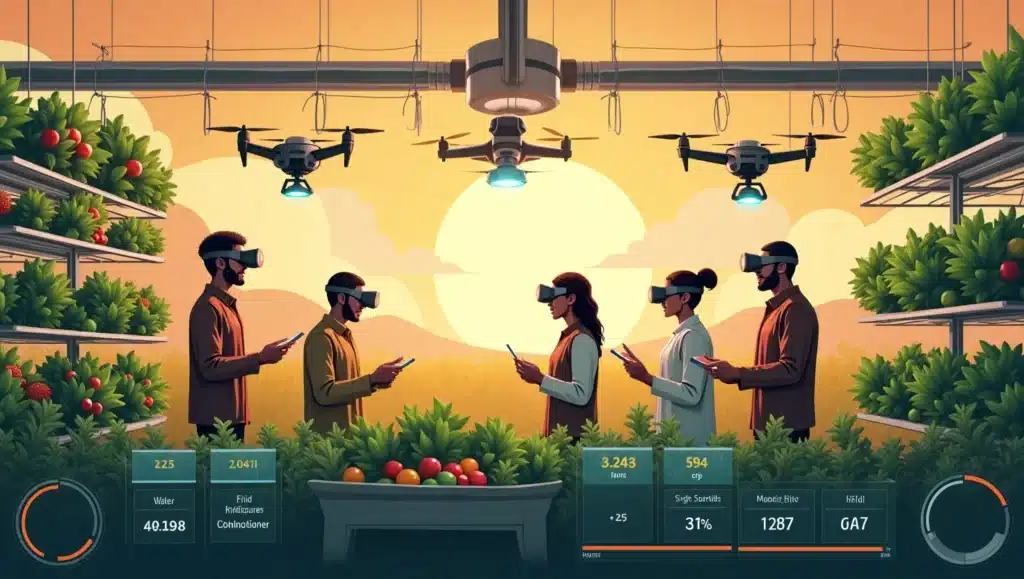
7. The Future of AI in Agriculture
Looking ahead, the potential for AI in farming is limitless. As technology continues to advance, we’ll see even more integrated AI systems that work seamlessly across the agricultural landscape. AI will become a central component of smart farming networks, linking sensors, drones, machinery, and cloud-based platforms to optimize every stage of the farming process.
Farmers will likely rely on predictive analytics for more than just weather and crop forecasting. AI will be used to predict market trends, consumer demand, and supply chain dynamics, helping farmers make more informed economic decisions. This could be a game-changer, especially as supply chain disruptions become more frequent due to geopolitical issues or climate events.
Moreover, we can expect AI to assist in climate adaptation by recommending adaptive farming strategies that align with changing weather patterns and local conditions. AI could also be key in advancing regenerative agriculture practices, helping to restore degraded soils and improve biodiversity by guiding sustainable farming methods.
The role of robotics in farming is also set to increase. We may soon see widespread use of autonomous harvesters, weeding robots, and AI-guided planting drones, which could dramatically reduce labor costs while improving productivity.
Ultimately, the future of AI in agriculture looks bright, offering transformative opportunities for both small and large-scale farmers. As long as these technologies are used ethically and sustainably, AI could revolutionize the way we grow food for generations to come.
8. Conclusion & Call to Action
AI is no longer a futuristic concept, it is here, transforming the way we grow food and manage our agricultural resources. From precision farming and AI-powered drones to predictive analytics and sustainable practices, the integration of AI into agriculture is changing the landscape of modern farming for the better.
As we move forward, it is crucial that farmers, agri-tech companies, and policymakers work together to ensure that these technologies are accessible, ethical, and sustainable. By embracing AI, we can create a future where farming is more efficient, resilient, and aligned with the needs of a growing global population. Are you ready to join the agri-tech revolution? Start by exploring AI solutions tailored to your farming needs, and take the first step toward a smarter, more sustainable future for agriculture
FAQs:
Q1. How is AI transforming modern farming practices?
AI is revolutionizing farming by offering solutions for crop disease detection, predictive analytics for yield forecasting, automated irrigation systems, and precision farming, improving both efficiency and sustainability.
Q2. What are the key benefits of AI in agriculture?
AI helps increase crop yields, reduce costs, improve labor efficiency, and enhance sustainability by optimizing resource use and minimizing waste.
Q3. What are the potential risks associated with AI in farming?
Risks include data privacy concerns, job displacement due to automation, and the potential for bias in AI algorithms, which could lead to inaccurate decisions.
Q4. How can AI help with sustainable farming practices?
AI supports sustainable agriculture by optimizing water use, reducing chemical inputs, and guiding regenerative practices that restore soil health and enhance biodiversity.
Q5. What is the future potential of AI in agriculture?
The future of AI in farming includes smarter tools for climate adaptation, advanced robotics, and AI-driven farm management software, ultimately helping farmers grow food more efficiently and sustainably.
Related Articles
Livestock Farming
AI in Aquaculture: How Smart Tech is Transforming Fish Farming
1. Introduction: The world’s appetite for seafood is growing fast, yet traditional...
Livestock Farming
The Future of Farming: Why AI-Powered Tractors Are Gaining Popularity
1. Introduction: Across the world, farmers are grappling with rising costs, shrinking...
Livestock Farming
Using AI to Track Livestock Health and Prevent Disease Outbreaks
1. Introduction: In recent years, livestock farmers around the world have faced...
Livestock Farming
How Machine Learning Is Changing Fertilizer Application on Farms
1. Introduction: For decades, farmers have applied fertilizer using general formulas, blanket...
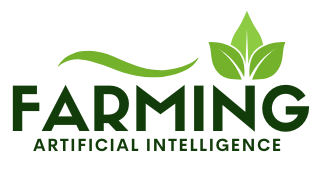
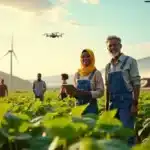

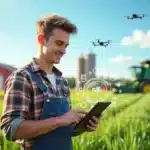

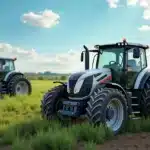


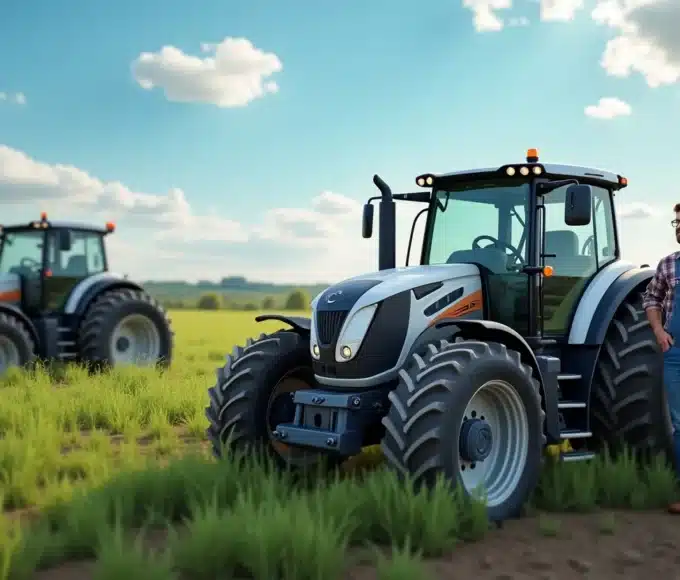
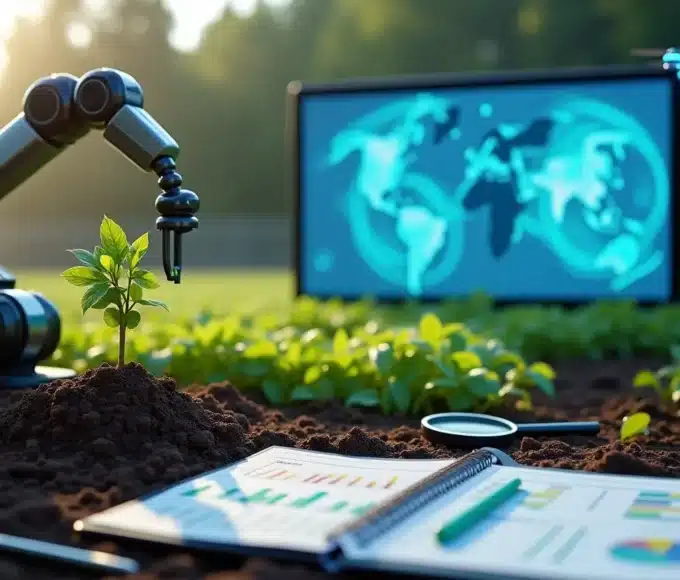
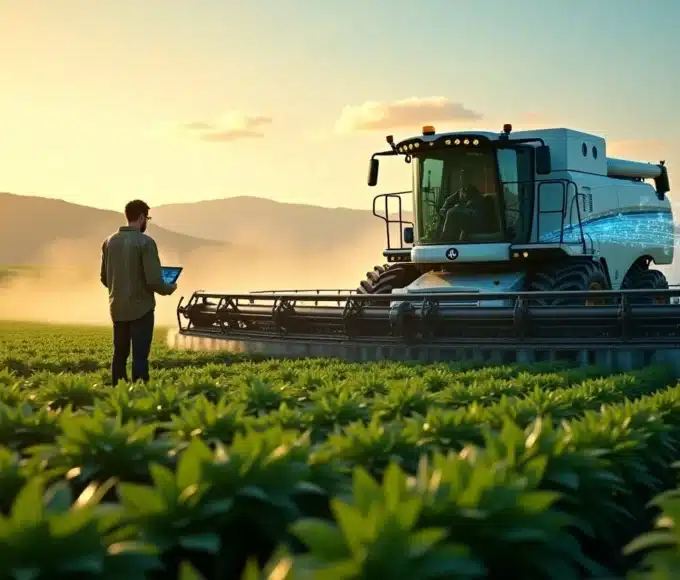
Leave a comment